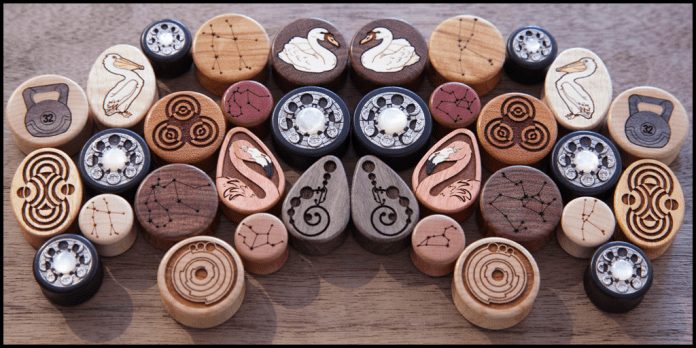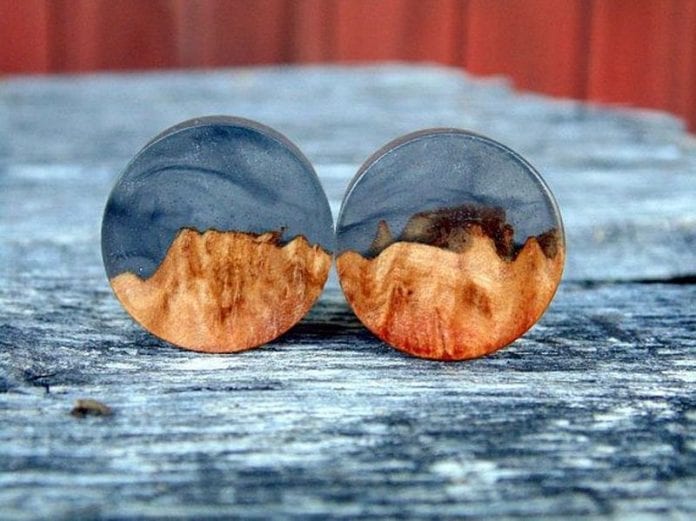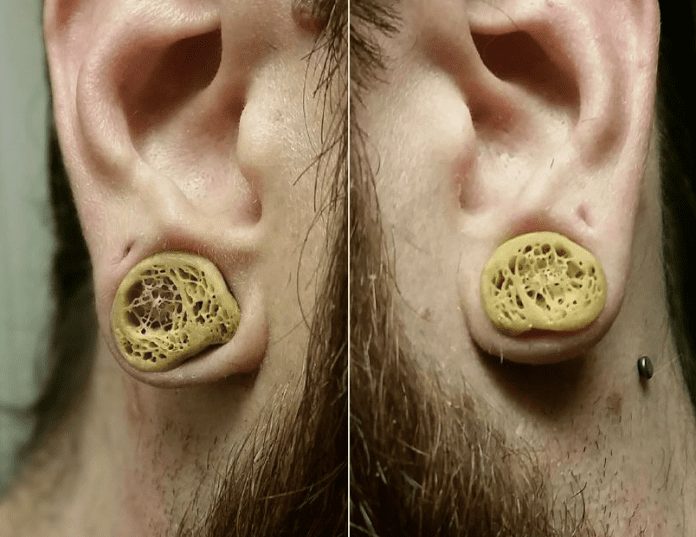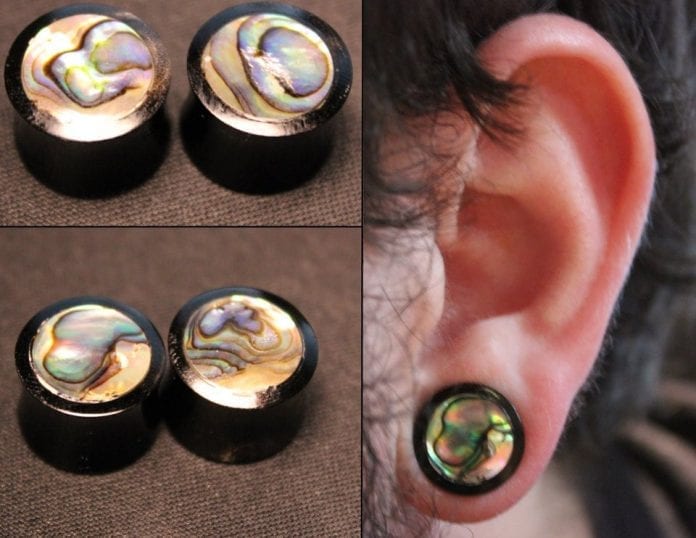There is a lot to be said for the unique and colourful acrylic plugs and tunnels, and steel is the ideal choice in which your fresh stretch is healing. But there is a range of organic plugs that are gaining popularity, and are stunning.
What Is An Organic Plug?

An organic plug or tunnel is made from naturally occurring materials. These are from once-living things in the form of wood, horn, or bone. These organic materials require different care and a great deal of skill goes into decorating them. Stone plugs are often found in the organic plug category too.
Non-organic plugs and tunnels are metal, silicone, and acrylic. A metal tunnel or taper is ideal for use on a healing piercing, whereas acrylic and silicone are best used once it has healed.
For more details check out Customplugs.
What Are The Benefits of Wearing Organic Plugs and Tunnels?
All plugs have a number of benefits, but when it comes to organic ones and tunnels, they are ideal for healed lobes.
- They don’t irritate the skin. Some steel or other metals can contain nickel which is known to irritate the lobe.
- They are very lightweight
- Unlike acrylics and silicone, they reduce the odour associated with some stretched piercings
- The carvings are incredibly intricate and usually by hand
- They are safe for those who have many hospital appointments, medical procedures or X-rays.
Odor Reducing
The porous nature of bone, horn, and wood means that the ear can breathe. This will dramatically reduce the build of dead skin cells. The second is that the material will absorb some of what your ear produces – again, because of the porous nature of these organic plugs and tunnels. Silicone or acrylic isn’t breathable, and the ‘funk’ can build up and release a particular smell.

Biocompatibility
One of the most significant benefits is the fact that organics plugs are non-irritating to healed piercings. Wood,stone, horn, and bone plug, don’t cause allergic reactions like metal often can. They are gentle on the tissues of the ear lobes too. However, it is essential not to use organic materials in your stretch lobe piercing until it has healed.
Lightweight
Unless you are going to continue to stretch your ears, then ideally you want a lightweight plug or tunnel. Bone, stone, horn, and wooden ones and tunnels are ultra-light, so will put almost no pressure on your earlobe.
Medically Sound
If you happen to need to go to the hospital a lot or have an illness that requires multiple treatments. You might want to consider changing your acrylic or silicone plug or tunnel to bone, horn, or wood. These can be safely used in the event of an MRI, X-rays, and more.
The aesthetics of stone, bone, horn, and wooden organic material plugs and tunnels are unique. They offer a somewhat softer, more earthy feel, while still displaying the lobe stretching in all its glory.
Cleaning Wooden Plugs

Before you can clean your plugs, you have to make sure that your hands are clean. And that you have used an antibacterial cleanser to do it. Unfortunately, wooden ones are prone to get dried out. You should give them a careful rub down with a damp cloth to start with. After that, you will be giving them a massage with some jojoba oil.
This will stop your wooden plugs from drying out and eventually cracking, and rendering them unsafe for use. After this, you can apply some olive oil to a dry cloth and give them another message. The wood will look darker immediately after and become darker over time too. You’ll notice the wooden type will have a slight shine to it. It is very important that you do not soak your wooden plugs in water, they will swell, and it is highly likely they will crack.
Where you store your plugs will make a difference to their lifespan too. No matter how beautiful they are, try to keep them in a cool place away from radiators and direct sunlight for long periods. The heat and sunlight can cause them to dry out pretty quickly.
Cleaning Bone Plugs

Bone might be one of the most simple organic plug materials to take care of. Due to the organic nature of bone, you should expect some changes within it. It is common for the bone to turn slightly yellow over time.
If your bone plug gets stained, it is important that you don’t try to bleach it. This will damage the bone and turn it slightly translucent. Take a microfiber cloth and add a mild antibacterial soap and water to try and wipe it away. You can polish your bone plug with jojoba oil, and a drop of tea tree oil. Much like wooden plugs, it is important that you do not soak the bone for any length of time as they can become brittle and damaged.
You should dry your bone plug immediately, so there is no water damage.
Cleaning Stone Plugs
Depending on the style of stone, almost all stone plugs are easy to look after. They are typically resistant to water, so this makes cleaning very easy. You should still make sure that you dry them well after cleaning.
Cleaning Horn Plugs

Cleaning horn plugs is much like cleaning bone plugs. You can use mild soap and water. Once the horn is washed, you should dry it immediately. Many horn plugs have silver detailing; if so, it is important that you polish these with a silver cloth every once in a while.
In most cases, to clean your bone, horn, wood, or stone plugs, you will simply need a dry cloth and some jojoba oil to maintain it. They should be kept in a cool space, away from radiators or direct sunlight.
Wooden, bone, and horn plugs can offer an organic alternative to acrylic, steel, and silicone plugs and tunnels. Without compromising on the style, design, and longevity. Wooden plugs come in a range of colors, as well as having engraving, or inlays.









